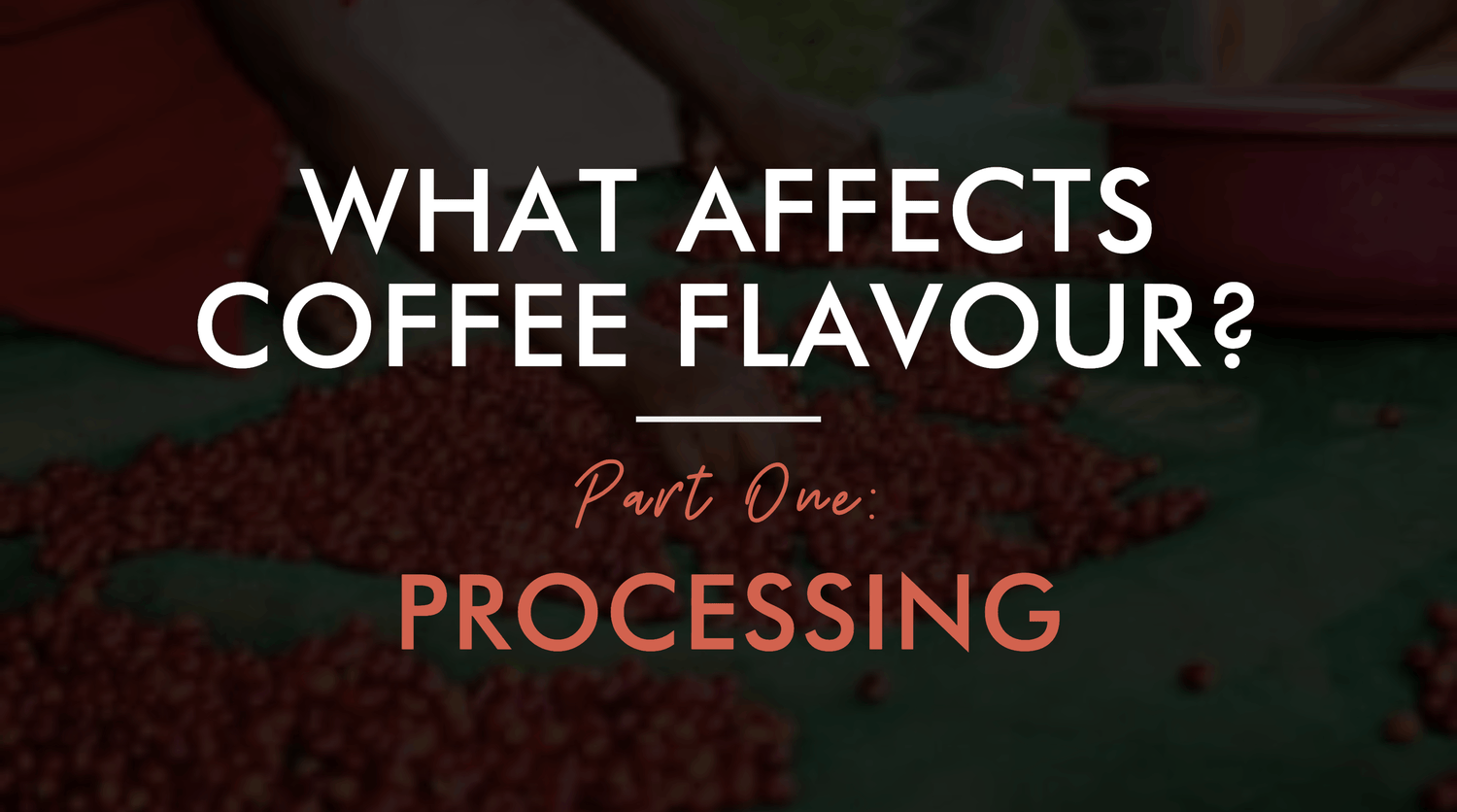Read Time: 4-5 minutes
What exactly is coffee processing?
Coffee processing is the procedure of removing some of the five layers of the coffee cherry – the number of layers removed depends on the processing method used. There are multiple different types of coffee processing, each of which will leave you with different natural flavour characteristics. I’m going to go over six types of processing today – washed, dry, semi-washed/pulp natural, honey, drying of the seed, and machine drying.


Washed Processed Coffee
Washing, encompassing around 50% of all coffee produced, is the most used coffee processing practice. A washed coffee will usually have citrus or pomme fruit flavours, and clean, floral and aromatic finishes. The body will often be smooth, and the acidity higher in quality (not the amount) than other processes.
The washing process is the method of removing the cherry seeds from the parchment prior to drying. The outer layer is removed from the cherry, along with some mucilage, through a de-pulping machine. The fruit is then placed in fermentation tanks to undergo one of two fermentation processes: wet or dry.

Wet fermentation
The fruit will sit in water in a fermentation tank for 12 to 18 hours until it starts to fall away from the parchment easily. To see whether the fruit is soft enough, the producer will rub a handful of fruit in their hands.
Wet fermentation results in a very clean, bright and crisp flavours
Dry fermentation
Dry fermentation is a much riskier process than wet fermenting, as it is much easier to over ferment the coffee, resulting in alcoholic or vinegar tasting coffee. To check the coffee in this process, the producer will place a stick through the middle of the coffee bed and then remove it. If the hole caves in, the coffee is not yet ready. If the hole remains unfilled, it means the beans are ready for the next part of the process. Once fermented, the farmers will wash the cherries to remove the fruit and then place them in the sun to dry.
Dry fermented coffees tend to have a sweeter complexity than wet fermented coffees, with a slightly fuller body.
Dry Processed Coffee
Sometimes referred to as the natural processing method, this process merely entails laying the cherries onto concrete patios or raised sunbeds until they dry out. These beds are usually made of hessian or similar material, and elevated to waist-height to allow for air circulation around the cherries.
There are many variables that producers can change to speed up or slow down the drying process. Some of these include having the cherries sit in thick layers to warm up and ferment slightly before spreading them out thinly. Some regions will lay out the cherries in a thin layer immediately. Varying the levels of shade and airflow help to even out the drying process to maintain consistency. The producer will then use a machine that will crack the fruit layer from the parchment once the fruit is dried and hard.

Naturally dried coffees tend to have a fuller body, with intense flavours of dried stone fruits or berries. However, natural coffees often have less clarity present in the cup. Acidity can also be inconsistent but more intense.
Semi-Washed/Pulp Natural Processed Coffee
This method involves removing the outer layer of the cherry with water flow (a wet pulping technique), the seed is dried with the parchment and mucilage. The drying in this process is slightly riskier than others due to the fruit being intact. The fruit is spread on raised beds and left to dry until the fruit is ready to fall off. Airflow, shade and frequent raking are essential in this method, as long drying periods can result in over-fermentation.
This drying stage can vary between producers. Some will choose to start with the beans in thick layers to allow for a little fermentation first, before spreading them thin to dry, where others will choose to go straight to the drying phase.
Honey Processed Coffee
This process often gets confused with the Semi Washed process above, however they are some key differences between the two processes. The semi-washed process involves the out layer being removed with a wet pulping technique, whereas a honey process uses a dry pulping technique. No water is used to remove the out later, leaving a really sticky fruit which is then placed on raised beds for drying.

Drying of the Seed Processed Coffee
Beans that get processed in this way is usually left in the parchment layer as a mean of extra protection from the sun. However, the parchment is sometimes removed to let the seeds dry faster. Generally speaking, this decision to remove the parchment will often be a financial decision, and definitely not made with quality in mind.
The most common drying method is concrete patios. These patios can be up to four football fields in size, and will continuously have workers raking the coffee to ensure the seeds are turned for even drying. Other methods include raised beds which allow better air flow, and closed pergolas (generally used in countries with unstable weather conditions that could affect the coffee).

Machine Dry Processed Coffee
Machine driers generally have varying success rates. In lower-quality areas, the coffee is dried with few to no resting periods and a lot of hot air. This method can result in the coffee drying too fast, with moisture levels rising again when the coffee is taken to rest.
The cell structure of the seed can be severely damaged using this method, destroying the quality level. A solution some farmers use to decrease this risk is imitating a day and night of drying by keeping the temperature much lower and allowing the cherries to rest. This often allows the seed to dry more evenly, and assist in keeping the cell structure in tact.





